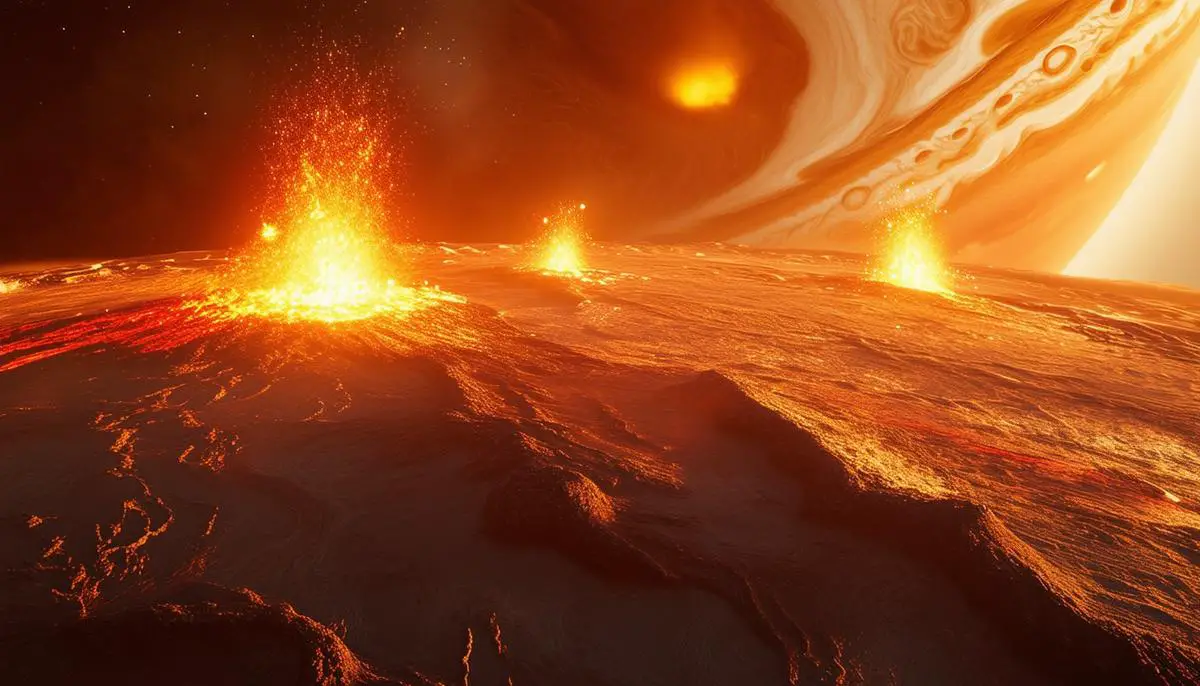Jupiter's moon Io stands out as a prime example of volcanic activity within our solar system. Its relentless eruptions and the forces driving them offer a window into the dynamic processes shaping celestial bodies. Beyond Io, other moons and planets also exhibit diverse volcanic phenomena, each contributing to our understanding of geological activity in space.
Io: The Most Volcanic Body
Io, Jupiter's innermost large moon, showcases unparalleled volcanic activity. With over 400 volcanoes, it surpasses any other celestial body in the solar system in terms of volcanic intensity. The primary driver behind this relentless activity is the gravitational interaction with Jupiter and neighboring moons Europa and Ganymede.
For every orbit of Ganymede, Io makes four, resulting in constant stretching and squashing that generates immense tidal forces. This frictional heat deep within Io melts rock, fueling its numerous volcanic eruptions.
Recent Observations:
- ALMA: Detected heavier sulfur isotopes, suggesting billions of years of volcanic activity1
- Juno's JIRAM: Revealed lava lakes with striking thermal signatures2
- Large Binocular Telescope: Provided detailed imaging of overlapping lava deposits3
Io's volcanic eruptions are particularly dramatic in scale, with some plumes reaching heights of 186 miles. These columns of sulfur and other materials contribute to Io's thin atmosphere and constantly reshape its landscape.
"Historical data from missions like Voyager and Galileo, combined with recent observations, suggest that Io's volcanic activity has persisted throughout its 4.57 billion-year existence."
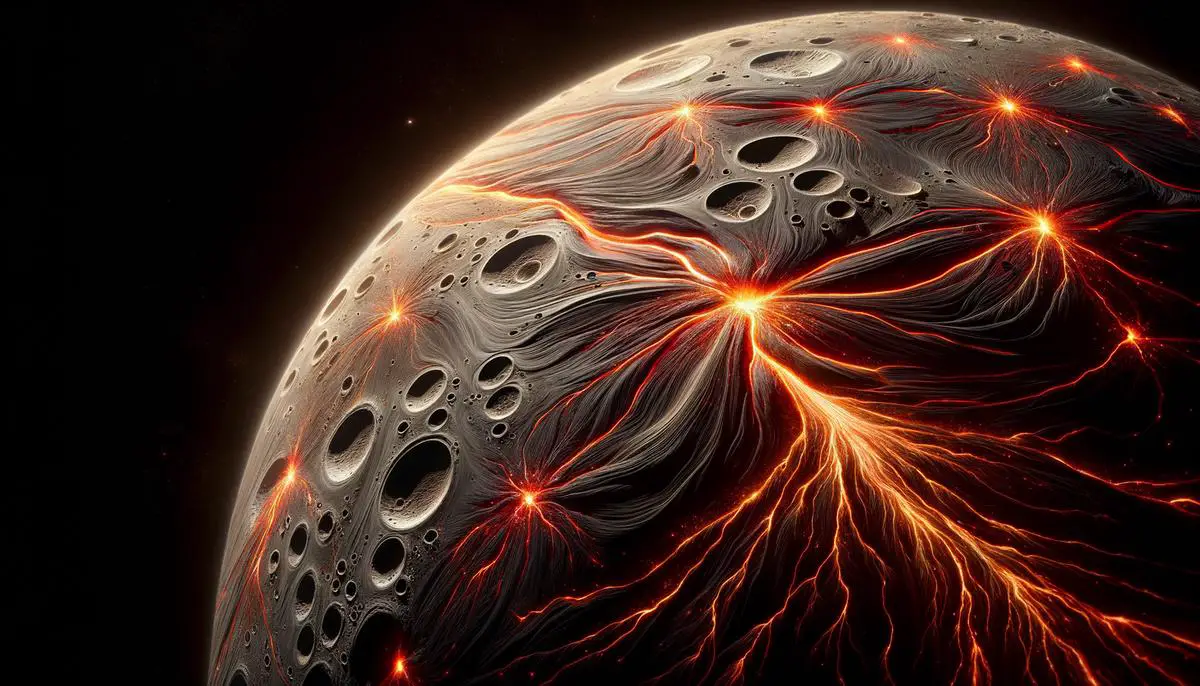
Volcanism on Other Moons
Beyond Io, other moons in the solar system exhibit intriguing volcanic processes, particularly in the form of cryovolcanism. Europa and Ganymede, two of Jupiter's other Galilean moons, show evidence of this icy volcanic activity.
Cryovolcanism on Jupiter's Moons:
- Europa: Potential subsurface ocean, icy plumes, and ridged plains
- Ganymede: Evidence of past cryovolcanic activity, subsurface ocean
Saturn's moon Enceladus offers dramatic evidence of ongoing cryovolcanism. The Cassini spacecraft discovered impressive ice geysers jetting water vapor, ice particles, and organic compounds from the moon's south polar region. These plumes emanate from fractures known as "tiger stripes" and have made Enceladus a prime target in the search for potential extraterrestrial life.4
Titan, Saturn's largest moon, exhibits a different form of cryovolcanism. With its thick atmosphere and methane-ethane lakes and seas, Titan's cryovolcanoes might release a mix of water ice and hydrocarbons from its subsurface, hinting at an internal ocean stirred by geological processes.
These diverse examples of volcanism and cryovolcanism across different moons highlight the adaptability of geological processes beyond Earth. Such discoveries continue to refine our understanding of the dynamic nature of celestial bodies in our solar system.
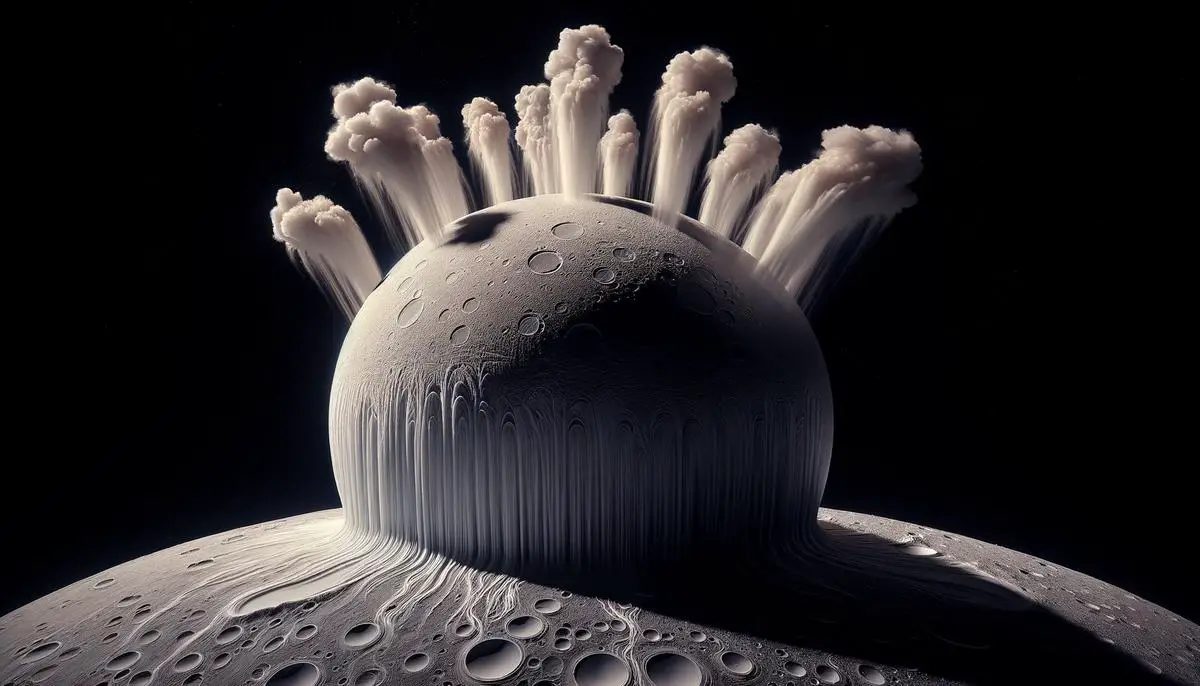
Volcanic Features on Mars and Beyond
Mars presents an intriguing comparison to the volcanic features seen on moons like Io and Enceladus. Olympus Mons, the largest volcano in the solar system, dominates Mars' volcanic landscape.
| Feature | Measurement |
|---|---|
| Height | ~16 miles (26 km) |
| Diameter | 374 miles (602 km) |
Its immense size is attributed to the lack of tectonic plate movement on Mars, allowing lava to accumulate over extended periods. Other significant Martian volcanoes include Elysium Mons and the Tharsis Montes region.
Venus offers another perspective on planetary volcanism. Despite its surface being shrouded in thick clouds, radar mapping has revealed a landscape dominated by vast lava plains and numerous volcanoes. Recent studies suggest possible ongoing or very recent volcanic activity on Venus, making it a compelling subject for future exploration.5
Mercury, the smallest planet in our solar system, exhibits signs of ancient volcanic activity. The MESSENGER mission captured images of vast plains of solidified lava and evidence of pyroclastic flows, indicative of explosive eruptions in Mercury's distant past. These volcanic activities are estimated to have occurred one to two billion years ago.
The varied volcanic landscapes across Mars, Venus, and Mercury, along with the diverse forms of volcanism on moons like Io and Enceladus, underscore the dynamic nature of celestial bodies within our solar system.
Technological Advances in Observing Volcanic Moons
Technological advancements have significantly enhanced our ability to observe and understand volcanic moons. Each new tool and mission has contributed unique capabilities to this field of exploration.
Key Technological Contributions:
- Galileo spacecraft (1995-2003): Provided foundational data on Io's volcanic activity
- ALMA: Offered detailed data on Io's atmospheric composition
- Large Binocular Telescope: Captured intricate details of Io's volcanic surface
- Juno spacecraft: Extended mission to include detailed studies of Io
Computational advancements have enabled simulations that predict the behavior of Io's volcanism under varying gravitational influences. These models, validated by observational data, help researchers anticipate volcanic activity and understand the subsurface mechanics of tidal heating.
The convergence of these technologies—spacecraft, ground-based observatories, and computational models—has dramatically expanded our knowledge of volcanic moons. Each new observation brings us closer to comprehending the complex and dynamic nature of these celestial bodies, underscoring the importance of continued investment in space exploration and technology.
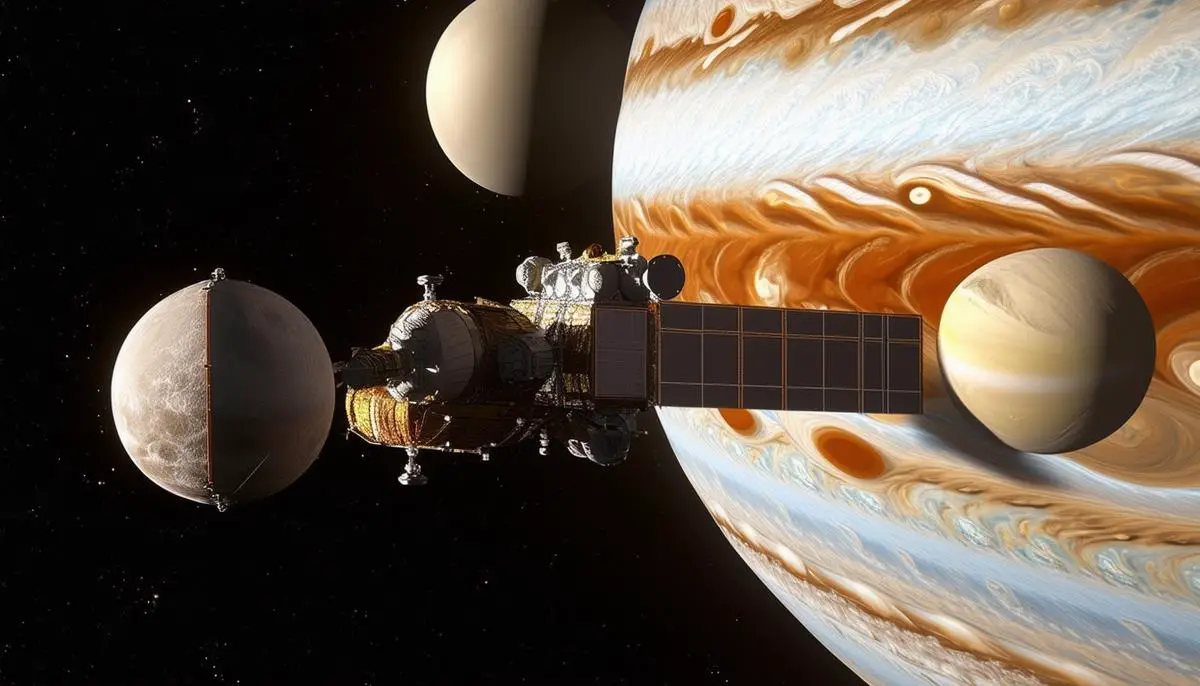
Future Research and Exploration
Upcoming missions and research initiatives promise exciting discoveries about volcanic moons. The Volatiles Investigating Polar Exploration Rover (VIPER), launching in 2024, will test technologies that could inform future probes of volcanic activities on moons like Io, Europa, and Enceladus.
The European Space Agency's Jupiter Icy Moons Explorer (JUICE), set for launch in April 2023, will study Ganymede, Europa, and Callisto. Its focus includes investigating cryovolcanism, especially on Europa, where subsurface water could indicate conditions for life.
NASA's Europa Clipper, scheduled for October 2024, will conduct multiple flybys of Europa. Equipped with ice-penetrating radar, thermal imagers, and mass spectrometers, it aims to understand Europa's cryovolcanic activities and capture direct images of plumes and surface features.
A proposed mission to Io, the Io Volcano Observer (IVO), would study its intense volcanic activity up-close if funded. IVO's advanced instrumentation could provide high-resolution imaging, thermal mapping, and in-situ analysis of volcanic plumes.
Planned Missions to Volcanic Moons:
- VIPER (2024): Testing technologies for volcanic moon exploration
- JUICE (2023): Studying Ganymede, Europa, and Callisto
- Europa Clipper (2024): Investigating Europa's cryovolcanic activities
- IVO (Proposed): In-depth study of Io's volcanic processes
- Enceladus Orbilander (Proposed): Orbiting and landing on Enceladus
The James Webb Space Telescope (JWST) offers additional insights, capable of observing volcanic plumes and hotspots on moons from afar and analyzing their composition and thermal profiles.
Emerging technologies like autonomous drones and miniaturized rovers could explore harsh and dynamic environments with improved precision in future missions. These innovations can conduct real-time analyses in previously unexplored volcanic regions.
Astrobiology research on Earth advances our understanding of how life could exist in extreme environments similar to volcanic moons. Studying extremophiles provides valuable clues about potential life forms in the subsurface oceans of Europa or Enceladus1.
Continued development of simulation models helps predict volcanic activities and their geophysical implications. These models, informed by mission data, refine our understanding of these moons' internal processes and offer predictive capabilities for future explorations.
"Each planned mission and technological innovation holds the promise of revealing more intricacies of these celestial bodies, bringing us closer to answering profound questions about volcanism and our solar system's dynamic nature."
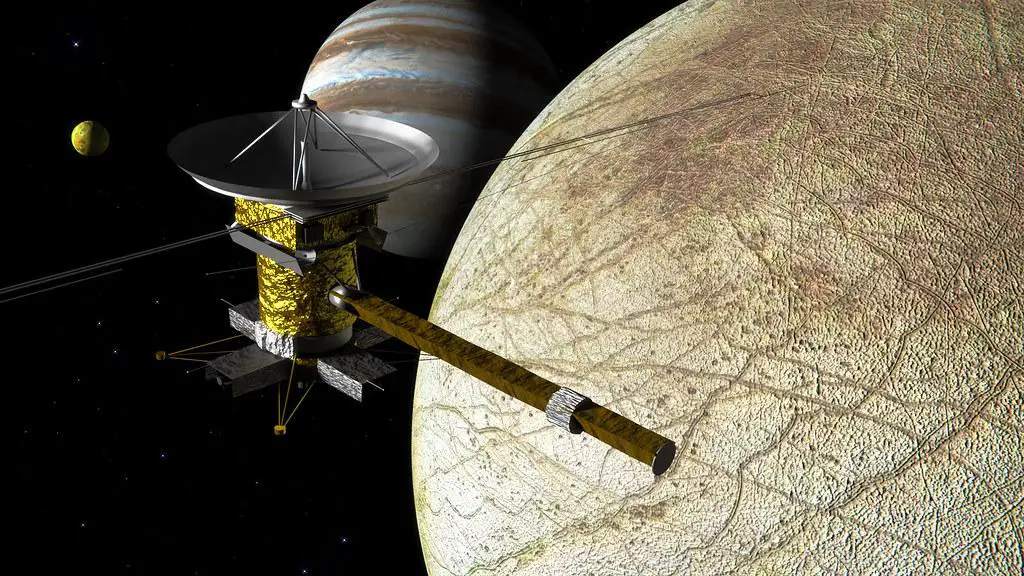
Io's volcanic activity, driven by gravitational interactions, demonstrates the powerful forces at work in our solar system. Studying these processes provides valuable insights into the dynamic nature of celestial bodies and enhances our understanding of planetary formation and evolution2.
![]()
